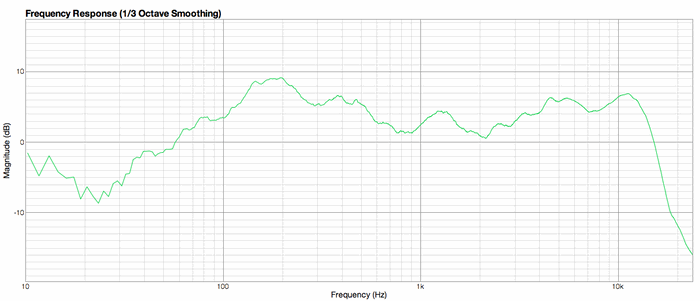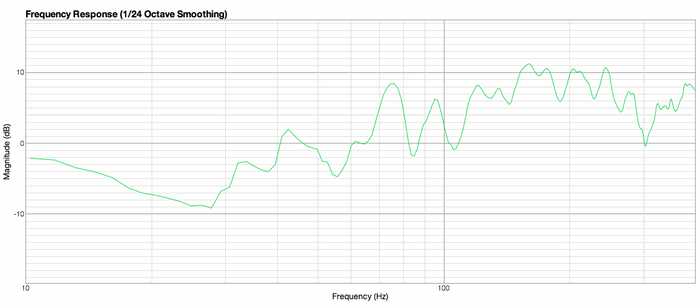A few weeks ago I took a full day to take stock of my acoustic treatment situation. What I found was pretty troubling, but I’m glad I took the time.
 When we first set up shop at Badlands, we built a bunch of acoustic panels using Roxul Rock Wool. These 2′ by 4′ panels are dense (8 lbs/square foot) enough to help absorb low-frequency sounds. The idea was to eliminate many of the low end problems found in small untreated rooms. Through experimentation and repeated listening over the course of a few weeks, I found the optimal configuration of our panels.
When we first set up shop at Badlands, we built a bunch of acoustic panels using Roxul Rock Wool. These 2′ by 4′ panels are dense (8 lbs/square foot) enough to help absorb low-frequency sounds. The idea was to eliminate many of the low end problems found in small untreated rooms. Through experimentation and repeated listening over the course of a few weeks, I found the optimal configuration of our panels.
I’ve acquired more treatment since then, and knew that I could improve the sound of the room. I downloaded FuzzMeasure, which uses a sweeping sine wave to measure the frequency response of a space, to help collect hard data that I could use to make informed decisions about the placement of the acoustic treatment.
After removing all the treatment from the studio, I ran 10 sine wave sweeps (FuzzMeasure’s is much better than that one, I just want to give you an idea of how obnoxious a sine wave sweep is to listen to 10 times.) Taking 10 separate measurements helped to eliminate errors and gave a nice picture of the average response of the room. Since Badlands is in a residential space and not a 100% soundproofed purpose-built studio, the extra tests reduced the effect that outside sounds (however low in level) had on the measurements. Here’s what I found:

It looks like the Cascades! While I knew to expect peaks and valleys where certain frequencies are summed or cancelled, this was much more dramatic than I imagined. And this is with many of the peaks smoothed over. Take a look at the most problematic area, under 400 Hz:

Serious issues abound. Imagine trying to mix in a room where 75 Hz is roughly 10 dB louder than 85 Hz! It’d be impossible to make any informed decisions about anything in that frequency range. No wonder so many mixes from home studios have low end problems!
Keep in mind this an empty room, and adding low frequency treatment will help to smooth out these peaks and valleys. Once I put the acoustic treatment back in, things got better. That said, all small rooms will have problems in this range, even with significant treatment. This is why it’s important to check mixes on a variety of systems, including headphones, which eliminate room response altogether.
I recommend to anyone mixing music in a space that was not designed for audio to get a program like FuzzMeasure (there’s a free alternative called Room EQ Wizard) and take some measurements. It’s a pretty easy process, and the insights it offers are invaluable. With knowledge of which frequencies are accentuated and attenuated in your room, you can make informed decisions about acoustic treatment. And even if you don’t eliminate all the problems in your room’s response, you’ll at least be aware of what your room is doing to your mixes.


Warning: count(): Parameter must be an array or an object that implements Countable in /home/hu3ptvxclybx/public_html/blog/wp-content/themes/thesis_184/lib/classes/comments.php on line 37